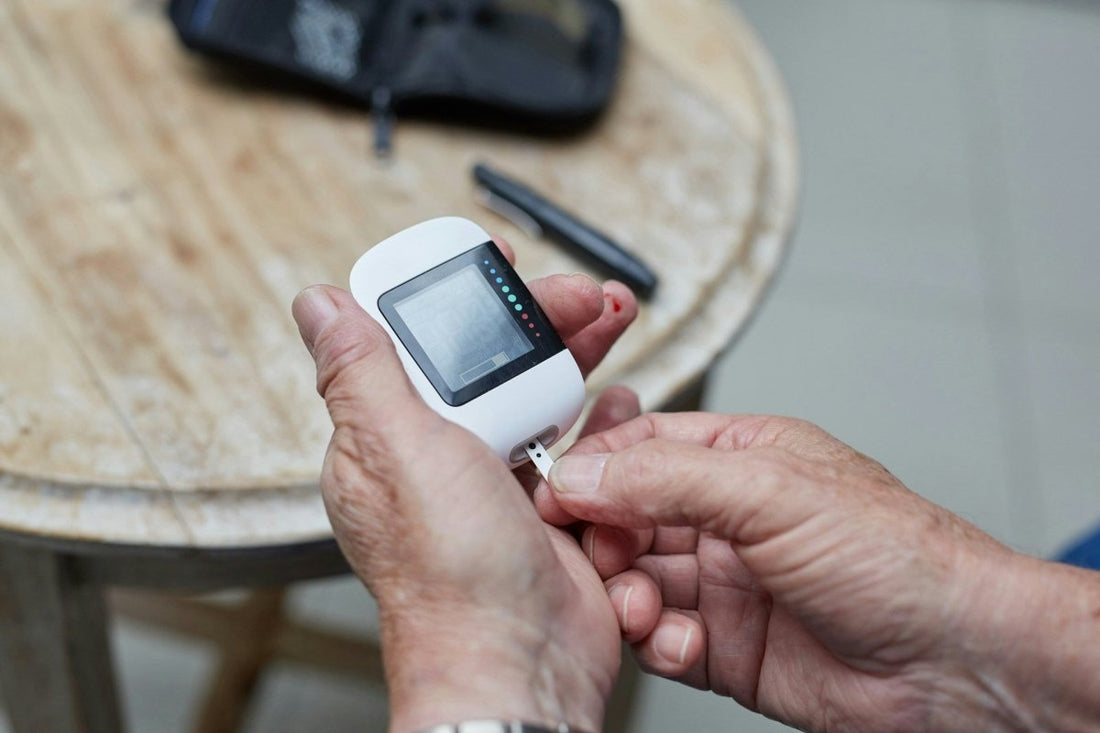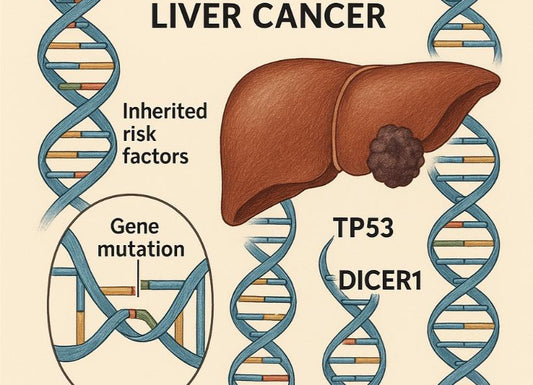Fasting Glucose Levels: A Complete Guide
 Written By
Yusela Aquino
Written By
Yusela Aquino

Maintaining optimal blood sugar levels is crucial for overall health, especially when it comes to fasting glucose levels. In this comprehensive guide, we'll delve into the fundamentals of fasting blood sugar, what constitutes a healthy fasting glucose level, how to identify and address high glucose levels, and the impact of diabetes type on fasting glucose. Additionally, we'll explore the importance of regular monitoring, lifestyle adjustments, and the prevention of complications through effective management.
The Fundamentals of Fasting Blood Sugar
Fasting blood sugar, also known as fasting plasma glucose (FPG), refers to the concentration of glucose in the bloodstream after an overnight fast. This measurement provides valuable insights into the body's ability to regulate blood sugar levels in the absence of food intake. Fasting blood sugar levels are typically measured in milligrams per deciliter (mg/dL) or millimoles per liter (mmol/L).
What Is Normal Fasting Glucose Level?

A healthy fasting glucose level typically falls within a specific range, as recommended by various health organizations such as the World Health Organization (WHO) and the American Diabetes Association (ADA). According to these guidelines, a normal fasting glucose level is typically between 70 to 99 mg/dL (3.9 to 5.5 mmol/L). Levels above this range may indicate prediabetes or diabetes, while levels below may suggest hypoglycemia.
Importance of Monitoring for Prediabetes and Type 2 Diabetes
Regular monitoring of fasting glucose levels is essential for early detection and management of prediabetes and type 2 diabetes. Prediabetes is characterized by higher than normal blood sugar levels but not yet high enough to be diagnosed as diabetes. Without intervention, prediabetes can progress to type 2 diabetes, a chronic condition that affects the body's ability to process glucose effectively.
Deciphering Normal Fasting Blood Sugar by Age
Fasting blood sugar levels can vary based on age, with older adults typically having slightly higher levels compared to younger individuals. However, it's important to note that age-related variations in blood glucose levels may also be influenced by other factors such as overall health and lifestyle habits. Healthcare providers consider these factors when interpreting fasting glucose levels and assessing an individual's risk for diabetes.
Identifying and Addressing High Glucose Levels
High fasting glucose levels, also known as hyperglycemia, occur when blood sugar levels are elevated beyond the normal range. This can be a cause for concern, especially when accompanied by other risk factors such as obesity, insufficient physical activity, and insulin resistance. Individuals with high fasting glucose levels should consult their healthcare provider for further evaluation and management.
Recognizing High Fasting Glucose: When to Be Concerned
A fasting blood glucose level of 102 mg/dL may raise concerns, as it falls slightly above the upper limit of the normal range. While a single elevated reading may not necessarily indicate diabetes, it's important to monitor blood sugar levels regularly and discuss any concerns with a healthcare provider. Lifestyle changes, such as adopting a healthy diet and increasing physical activity, may help lower elevated glucose levels.
See Related: Revolutionizing Kidney Health: The Impact of At-Home Kidney Tests
Comprehensive Overview of Blood Sugar Metrics
Understanding blood sugar metrics involves differentiating between normal and abnormal blood sugar levels, as well as the role of various tests in managing diabetes. Alongside fasting blood glucose, tests such as the A1C test, continuous glucose monitoring (CGM), and blood glucose tests provide valuable information about overall glycemic control and help guide treatment decisions.
Special Focus: The Impact of Diabetes Type on Fasting Glucose
The dynamics of fasting glucose differ between type 1 and type 2 diabetes, each requiring tailored management approaches. In type 1 diabetes, fasting blood sugar levels may be affected by insufficient insulin production, necessitating insulin therapy and careful monitoring of carbohydrate intake. On the other hand, type 2 diabetes is often associated with insulin resistance and lifestyle factors such as obesity, highlighting the importance of weight management and physical activity in controlling blood sugar levels.
Exploring Alternative Monitoring Methods
In addition to traditional blood tests, advancements in technology have introduced alternative methods for monitoring blood sugar levels. Continuous glucose monitoring (CGM) systems, for example, provide real-time data on glucose levels throughout the day, offering insights into patterns and trends that can inform treatment decisions. These devices are particularly useful for individuals with diabetes who require frequent monitoring or have difficulty with traditional blood tests.
Nutritional Strategies for Managing Blood Sugar

Diet plays a crucial role in managing blood sugar levels, and adopting a balanced, nutrient-rich diet can help stabilize glucose levels and reduce the risk of complications associated with diabetes. Foods that are high in fiber, such as fruits, vegetables, whole grains, and legumes, can help slow the absorption of glucose and prevent spikes in blood sugar. Additionally, avoiding sugary beverages, processed foods, and excessive carbohydrate intake can help maintain stable blood sugar levels.
Incorporating Physical Activity into Diabetes Management
Regular physical activity is another important aspect of diabetes management, as it can improve insulin sensitivity, lower blood sugar levels, and reduce the risk of cardiovascular complications. Aim for at least 150 minutes of moderate-intensity aerobic exercise per week, such as brisk walking, cycling, or swimming, along with strength training exercises two or more days per week. Be sure to consult with a healthcare provider before starting any new exercise program, especially if you have pre-existing health conditions.
Conclusion: A Call to Action for Regular Monitoring and Lifestyle Adjustments
Regular monitoring of fasting glucose levels and adopting healthy lifestyle changes are essential for preventing complications associated with diabetes. By undergoing regular blood sugar tests, individuals can identify potential issues early and work with healthcare providers to develop personalized management plans. With proper education, support, and proactive management, individuals can take control of their diabetes and reduce the risk of long-term complications such as heart disease, kidney disease, and high blood pressure.
The Road Ahead: Preventing Complications Through Effective Management

Looking ahead, preventing complications associated with unmanaged diabetes requires a comprehensive approach that includes early detection, education on diabetes care, and ongoing support from healthcare professionals. By prioritizing regular blood sugar testing, adopting healthy lifestyle habits, and seeking timely medical intervention when needed, individuals can reduce the risk of complications and improve their overall quality of life.
What causes hyperglycemia?
Hyperglycemia, or high blood sugar, can be caused by various factors, including:
-
Poor Diet: Consuming excessive amounts of sugary or high-carbohydrate foods and beverages can lead to spikes in blood sugar levels.
-
Lack of Physical Activity: Sedentary lifestyle habits can contribute to insulin resistance and impaired glucose metabolism, resulting in elevated blood sugar levels.
-
Insulin Resistance: Insulin resistance occurs when cells in the body become less responsive to insulin, the hormone responsible for regulating blood sugar levels.
-
Stress: Physical or emotional stress can trigger the release of stress hormones, such as cortisol and adrenaline, which can raise blood sugar levels.
-
Medications: Certain medications, such as corticosteroids, diuretics, and some antidepressants, may interfere with glucose metabolism and lead to hyperglycemia.
-
Underlying Medical Conditions: Health conditions such as diabetes, obesity, hormonal imbalances, and liver or kidney disease can contribute to persistent hyperglycemia.
What are the risks of a blood glucose test?
While blood glucose testing is generally safe and well-tolerated, there are some potential risks and limitations to consider:
-
Discomfort: Some individuals may experience mild discomfort or pain when pricking their finger to collect a blood sample for testing.
-
Infection: Improper technique or inadequate hygiene when collecting blood samples may increase the risk of infection at the puncture site.
-
Bruising or Bleeding: In some cases, repeated blood glucose testing may cause bruising, bleeding, or skin irritation at the puncture site.
-
False Results: External factors such as improper sample collection, contamination, or equipment malfunction may lead to inaccurate blood glucose readings.
-
Hypoglycemia: In individuals with diabetes or those taking medications that lower blood sugar, excessive blood glucose testing without adequate carbohydrate intake may lead to hypoglycemia (low blood sugar).
It's essential to follow proper testing procedures, maintain good hygiene practices, and consult with a healthcare provider if you have any concerns about blood glucose testing.
What is Prediabetes?
Prediabetes is a condition characterized by higher than normal blood sugar levels but not yet high enough to be diagnosed as diabetes. Individuals with prediabetes have impaired glucose tolerance and are at increased risk of developing type 2 diabetes, heart disease, and other health complications. Lifestyle modifications, such as adopting a healthy diet, increasing physical activity, and maintaining a healthy weight, can help prevent or delay the progression to type 2 diabetes in individuals with prediabetes.
Are you on the road to type 2 diabetes?
If you have risk factors for type 2 diabetes, such as obesity, sedentary lifestyle, family history of diabetes, or history of gestational diabetes, you may be at increased risk of developing the condition. It's essential to undergo regular blood sugar testing and consult with a healthcare provider to assess your risk and take proactive steps to prevent or manage diabetes. Lifestyle changes, such as adopting a healthy diet, increasing physical activity, and maintaining a healthy weight, can help reduce the risk of developing type 2 diabetes and improve overall health and well-being.
Who performs a fasting blood sugar test?
A fasting blood sugar test can be performed by various healthcare professionals, including:
-
Primary Care Physicians: Family doctors, internists, and general practitioners often perform fasting blood sugar tests as part of routine health screenings or to evaluate patients with symptoms suggestive of diabetes or other metabolic disorders.
-
Endocrinologists: Endocrinologists, who specialize in hormone-related conditions, may perform fasting blood sugar tests to diagnose and manage diabetes, thyroid disorders, and other hormonal imbalances.
-
Nurses and Nurse Practitioners: Registered nurses (RNs) and nurse practitioners (NPs) may collect blood samples and perform fasting blood sugar tests in clinical settings under the supervision of a healthcare provider.
-
Laboratory Technicians: Phlebotomists and laboratory technicians are trained to collect blood samples and perform various laboratory tests, including fasting blood sugar tests, in hospital or clinical laboratory settings.
Regardless of who performs the test, it's essential to follow any pre-test instructions provided by your healthcare provider and discuss the results with them to ensure proper interpretation and follow-up care.
How can I lower my fasting glucose level naturally?
Lowering fasting glucose levels naturally often involves adopting healthy lifestyle habits and making dietary and exercise modifications. Here are some strategies to consider:
-
Follow a Balanced Diet: Choose foods that are low in refined sugars and carbohydrates and high in fiber, protein, and healthy fats. Incorporate plenty of fruits, vegetables, whole grains, lean proteins, and healthy fats into your meals.
-
Engage in Regular Physical Activity: Aim for at least 150 minutes of moderate-intensity aerobic exercise, such as brisk walking, cycling, or swimming, per week. Incorporate strength training exercises two or more days per week to build muscle and improve insulin sensitivity.
-
Maintain a Healthy Weight: Losing excess weight, especially around the abdomen, can help improve insulin sensitivity and lower fasting glucose levels. Aim for gradual, sustainable weight loss through a combination of diet, exercise, and lifestyle changes.
-
Stay Hydrated: Drink plenty of water throughout the day to stay hydrated and support proper kidney function, which plays a role in glucose metabolism and blood sugar regulation.
-
Manage Stress: Practice stress-reducing techniques such as mindfulness meditation, deep breathing exercises, yoga, or tai chi to help lower cortisol levels and improve overall stress resilience.
-
Get Adequate Sleep: Aim for 7-9 hours of quality sleep per night, as inadequate sleep can disrupt hormone levels, including insulin and cortisol, and affect blood sugar regulation.
-
Limit Alcohol Consumption: Limit alcohol intake to moderate levels, as excessive alcohol consumption can interfere with blood sugar regulation and contribute to insulin resistance.
It's important to consult with a healthcare provider before making any significant changes to your diet, exercise routine, or medication regimen, especially if you have underlying health conditions or are taking medications that may affect blood sugar levels. Your healthcare provider can provide personalized recommendations based on your individual health status and help you develop a comprehensive plan to lower fasting glucose levels naturally.
Related Resources
- Glucose in Urine. What Could It Mean?
- Blood Sugar Monitoring in Diabetes
- Urine Glucose Levels Chart: Understanding Results
- The Complete Guide to At-Home Kidney Function Tests
References
-
-
Blood Glucose Monitoring - StatPearls - NCBI Bookshelf
https://www.ncbi.nlm.nih.gov/books/NBK555976/ -
Diabetic Cognitive Dysfunction: From Bench to Clinic - PubMed
https://www.ncbi.nlm.nih.gov/pubmed/30727866 -
International Consensus on Use of Continuous Glucose Monitoring - PMC
https://www.ncbi.nlm.nih.gov/pmc/articles/PMC6467165/
-
-
-
Diabetes Diagnosis & Tests | ADA
https://diabetes.org/diabetes/a1c/diagnosis -
Diabetes Diagnosis & Tests | ADA
https://www.diabetes.org/diabetes/a1c/diagnosis -
High Morning Blood Glucose | ADA
https://www.diabetes.org/diabetes/treatment-care/high-morning-blood-glucose
-
-
-
Prediabetes - Your Chance to Prevent Type 2 Diabetes | CDC
https://www.cdc.gov/diabetes/prevention-type-2/prediabetes-prevent-type-2.html -
Manage Blood Sugar | Diabetes | CDC
https://www.cdc.gov/diabetes/treatment/ -
Diabetes Tests | CDC
https://www.cdc.gov/diabetes/diabetes-testing/
-
-
-
Continuous Glucose Monitoring - NIDDK
https://www.niddk.nih.gov/health-information/diabetes/overview/managing-diabetes/continuous-glucose-monitoring -
Diabetes Tests & Diagnosis - NIDDK
https://www.niddk.nih.gov/health-information/diabetes/overview/tests-diagnosis -
Diabetes Prevention Program (DPP) - NIDDK
https://www.niddk.nih.gov/about-niddk/research-areas/diabetes/diabetes-prevention-program-dpp
-
-
-
Tests of glycemia in diabetes mellitus. Their use in establishing a diagnosis and in treatment - PubMed
https://pubmed.ncbi.nlm.nih.gov/2642375 -
Eating Dinner Early Improves 24-h Blood Glucose Levels and Boosts Lipid Metabolism after Breakfast the Next Day: A Randomized Cross-Over Trial - PubMed
https://pubmed.ncbi.nlm.nih.gov/34371933/ -
Effect of Continuous Glucose Monitoring on Glycemic Control in Adults With Type 1 Diabetes Using Insulin Injections: The DIAMOND Randomized Clinical Trial - PubMed
https://pubmed.ncbi.nlm.nih.gov/28118453/
-

Yusela is a medical student with a degree in Biology and a strong foundation in health communication. With experience in both research and clinical settings, she writes clear, evidence-informed content to help patients and caregivers better understand liver health, chronic disease, and transplant care.



